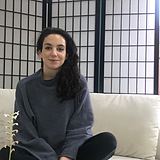What’s the worst that can happen in a yoga class?
Falling through windows, broken bones, and anaphylactic shock are not commonly associated with yoga. And yet, such incidents are more common than you would think.
Most yoga students, however, do not consider these risks when booking onto a yoga class. We tend to think of yoga as inherently safe, peaceful, and restorative. And of course, it can be—when carried out by a trained and experienced yoga teacher. The issue arises when said teacher does not have any relevant experience, save for building a successful Instagram profile. In the age of social media, this seems to be the biggest selling point.
I, for one, have been guilty of browsing the profiles of Instayogis in impressive postures, effortlessly holding fallen angel for a 30-second story. Inspired by an image of a teacher in a one-armed handstand. We book onto their classes because, surely, if they can do it, they can teach it!
Not quite.
During my experience in the industry, I have come across students with twisted ankles, broken hips and, in the worst-case, paralyzed by an unqualified yoga teacher. The ability to carry out impressive poses does not correlate with the knowledge of human anatomy or how to instruct others. But how can you tell?
How do you decipher a world-class, qualified yoga teacher from someone who is simply deft in positioning their legs behind their neck?
Well, the first thing to do is check out their qualifications, which they should have listed on their website.
At a minimum, a teacher should have completed a 200-hour foundation training course, and ideally be accredited with a registered body like Yoga Alliance Professionals. This is most often demonstrated by a designed logo on the instructors website.
Being accredited with a registered body is a good indicator of teaching ability. A yoga accreditation suggests the teacher’s qualifications have undergone some sort of “vetting,” and are not simply self-prescribed yogis, but have the training to show for it.
Such registered global yoga directories will often display teacher reviews.
Next, pore over their reviews.
Nowadays, we’re all a little more sceptical of glowing testimonials, and rightly so. The ease of falsifying reviews on personal sites has created a proliferation of 5-star ratings, typically plastered on the home page of personal sites.
Typically speaking, it is worth taking reviews with a pinch of salt and focusing on the reported actions of the teacher rather than the many adjectives used to describe their greatness.
In contrast, reviews posted on impartial yogi-listings—which teachers do not control—tend to give more genuine, moderate opinions, showcasing a more accurate impression of the instructor in question.
Then, look into their offered teachings.
A little research goes a long way. Check out what classes the teacher typically holds, and in which studios. If you’re looking for specialist classes, say yoga for pregnancy, the instructor should have the relevant training; qualifications in that field is a must.
You want to find a space that meets your specific needs. For example, if you are looking for Mysore classes at a studio that specialises in yoga nidra, with yoga-nidra trained teachers, you may wish to consider looking elsewhere. So, have an idea of what you might be looking for in your practice. That’ll help you find just the right teacher.
Take the time to read the class and studio description, and assess whether it meets your needs.
While the ability to carry out monkey side plank pose is no doubt impressive, it isn’t necessarily the sign of a truly great teacher.
If you are on the hunt for a yoga teacher, I recommend forgoing their Insta feed for a little look into the teacher’s biography, experiences, and accreditation.
The best teacher for you is one that best meets your needs, and has the qualifications to do so!











Read 0 comments and reply